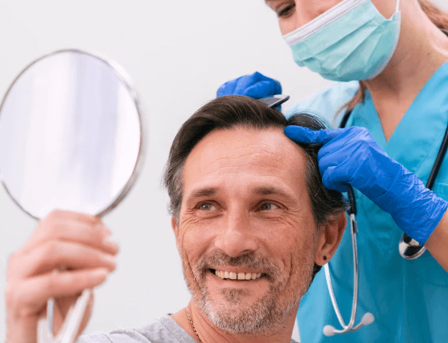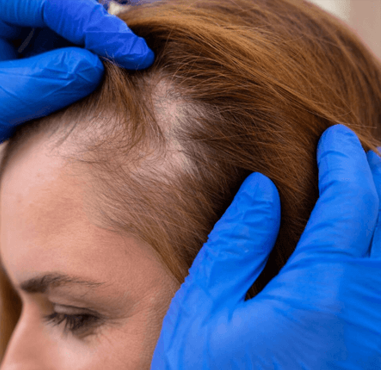Joint pain and arthritis are some of the most common musculoskeletal conditions affecting millions of people worldwide. Whether caused by aging, injury, or autoimmune disorders like rheumatoid arthritis, these conditions can significantly reduce mobility and quality of life. In South Korea, a country known for its cutting-edge approach to regenerative medicine, exosome therapy is emerging as a revolutionary treatment for joint disorders — offering a promising alternative to surgery and long-term medication.
🧬 What Is Exosome Therapy?
Exosomes are nano-sized vesicles secreted by stem cells. These tiny biological messengers contain growth factors, proteins, lipids, and RNA that play a crucial role in cell-to-cell communication. Unlike stem cells, exosomes are cell-free, meaning they carry a lower risk of immune rejection or tumor formation, making them a safer option for regenerative therapies.
In joint treatment, exosomes work by:
- Reducing inflammation in synovial tissue
- Stimulating cartilage regeneration
- Promoting angiogenesis (new blood vessel formation)
- Improving synovial fluid quality
- Inhibiting catabolic pathways that break down joint tissue
⚕️ Why Korean Orthopedic Clinics Are Embracing Exosome Therapy
South Korea is internationally recognized for its leadership in biotechnology, orthopedics, and medical innovation. Korean clinics are at the forefront of integrating exosome therapy into musculoskeletal care for several key reasons:
1. Regenerative Focus with Minimal Invasiveness
Korean orthopedic specialists emphasize non-surgical, tissue-preserving solutions. Exosome therapy aligns perfectly with this philosophy by supporting the body’s natural healing without the need for joint replacement or invasive procedures.
2. GMP-Certified, High-Quality Exosome Products
Korean biotech firms produce clinical-grade exosomes under strict Good Manufacturing Practices (GMP), ensuring purity, potency, and safety. These are typically derived from mesenchymal stem cells (MSCs) and rigorously tested for consistency.
3. Advanced Diagnostic Imaging
Clinics utilize MRI, ultrasound, and motion-capture imaging to precisely diagnose joint damage and guide exosome injection placement, ensuring targeted delivery to the affected tissues.
4. Integrated Pain Management and Rehab
Exosome therapy in Korea is often part of a broader multi-modal pain management plan, including physical therapy, acupuncture, prolotherapy, and hyaluronic acid injections — all coordinated for maximal effect.
🦵 Conditions Treated with Exosome Therapy in Korea
Korean orthopedic and sports medicine clinics use exosome therapy to address a wide range of joint conditions, including:
- Osteoarthritis (Knee, Hip, Shoulder, Ankle)
- Rheumatoid Arthritis
- Meniscus or Labral Tears
- Tendonitis and Tendinosis
- Ligament injuries (ACL, MCL)
- Bursitis and Synovitis
- Post-surgical inflammation or delayed healing
💉 What to Expect During Exosome Treatment
A typical treatment protocol in Korean orthopedic clinics looks like this:
1. Initial Consultation & Imaging
- Full orthopedic exam with MRI or ultrasound
- Blood tests to rule out systemic autoimmune issues
2. Personalized Treatment Plan
- Customized based on joint damage severity, age, and activity level
- May combine exosomes with hyaluronic acid or PRP (platelet-rich plasma)
3. Injection Procedure
- Image-guided (ultrasound or fluoroscopy) intra-articular injection
- Local anesthetic is often used to minimize discomfort
- Takes 20–40 minutes; no general anesthesia required
4. Recovery and Rehab
- Most patients resume normal activity within 24–72 hours
- Physical therapy often begins 1–2 weeks post-injection to rebuild strength
- Follow-up injections may be recommended for chronic or severe cases
📊 Clinical Outcomes and Safety
✅ Reported Benefits:
- Reduced joint pain and stiffness within 2–4 weeks
- Improved range of motion and joint function
- Slowed progression of cartilage degeneration
- Minimal side effects (mild swelling or soreness at injection site)
🔬 Korean Research Highlights:
Several Korean university hospitals and private clinics are conducting clinical trials that show significant improvements in cartilage regeneration and reduction in inflammatory biomarkers in patients receiving exosome therapy for osteoarthritis.
🏥 Top Korean Clinics Offering Exosome Joint Therapy
Here are some of the top orthopedic and regenerative medicine centers in Korea offering exosome-based joint treatments:
1. Nanoori Hospital (Seoul)
- Specializes in spinal and joint care
- Offers advanced regenerative protocols including exosomes, PRP, and stem cell therapies
2. Chung-Ang University Hospital – Joint & Regenerative Medicine Center
- Leading research hospital participating in exosome clinical trials
- Focus on osteoarthritis and sports injury rehab
3. Regen Clinic (Gangnam)
- Premium regenerative clinic focusing on non-surgical joint recovery
- Customizes exosome therapy with individualized rehab programs
4. The Better Clinic
- Known for holistic orthopedic care and minimally invasive pain solutions
- Offers exosome injections for knee, hip, and shoulder arthritis
🌍 Why International Patients Are Choosing Korea
- Cost-effective compared to U.S. or Europe
- English-speaking services and international patient departments
- World-class technology with short wait times
- Medical tourism packages that include treatment, lodging, and sightseeing
🧾 Cost and Availability
- Single exosome injection session: Approx. $1,000–$2,500 USD (varies by joint and clinic)
- Full treatment programs: $3,000–$7,000 for multiple sessions + rehab
- Insurance coverage: Typically not covered internationally; Korean clinics offer package deals for foreign patients
🔚 Conclusion
Exosome therapy is transforming how joint pain and arthritis are treated — not just by masking symptoms but by repairing tissues at the cellular level. Korean orthopedic clinics lead the way in integrating this safe, innovative therapy into mainstream care. Whether you’re an active adult with a sports injury or an older patient managing arthritis, Korea’s exosome-based regenerative treatments offer hope for lasting relief and mobility without surgery.




